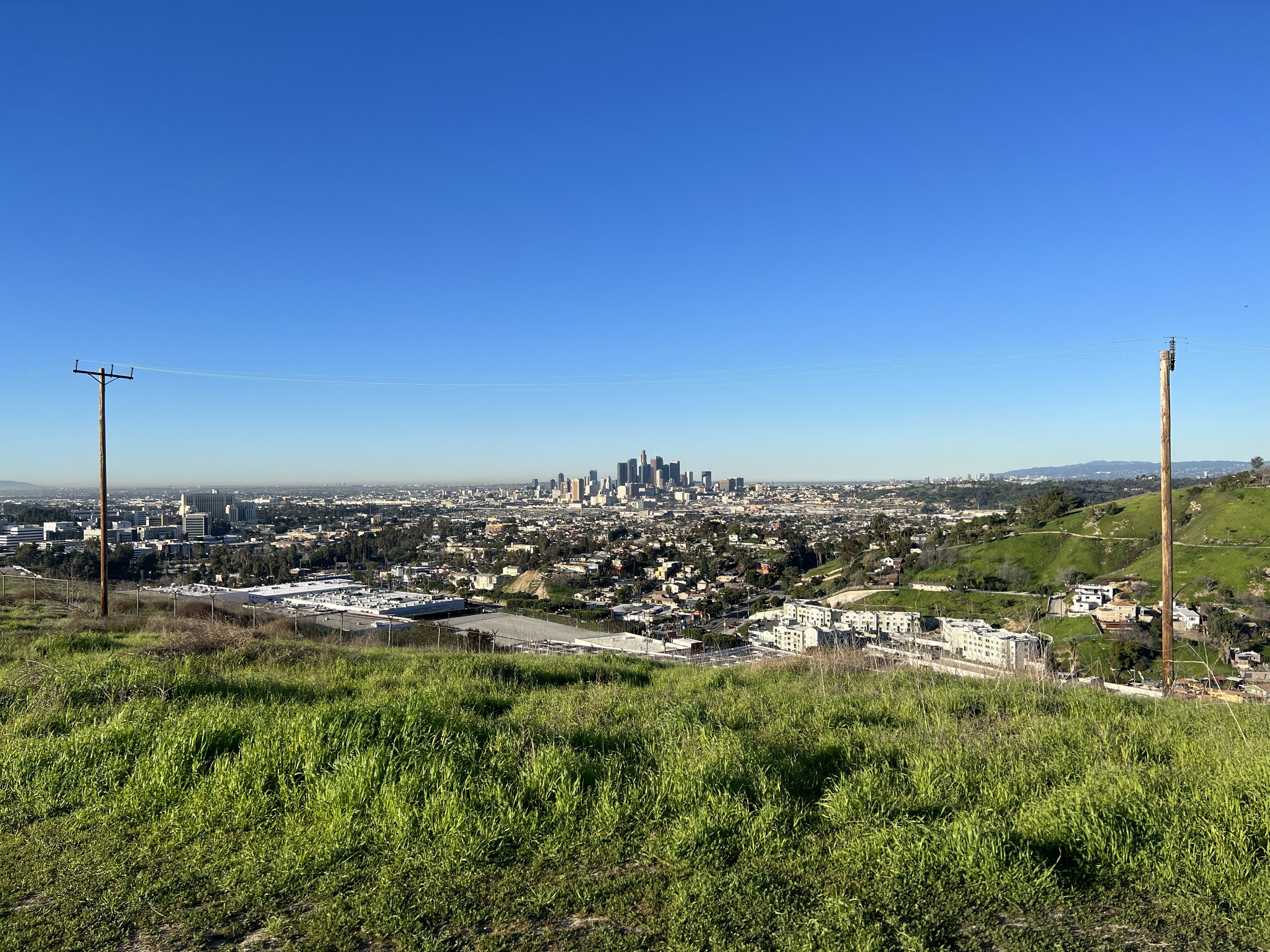
Ascot Hills Park Plant List
Alphabetical by Common Name, Plant Association and Life Form
Walnut Woodland
-
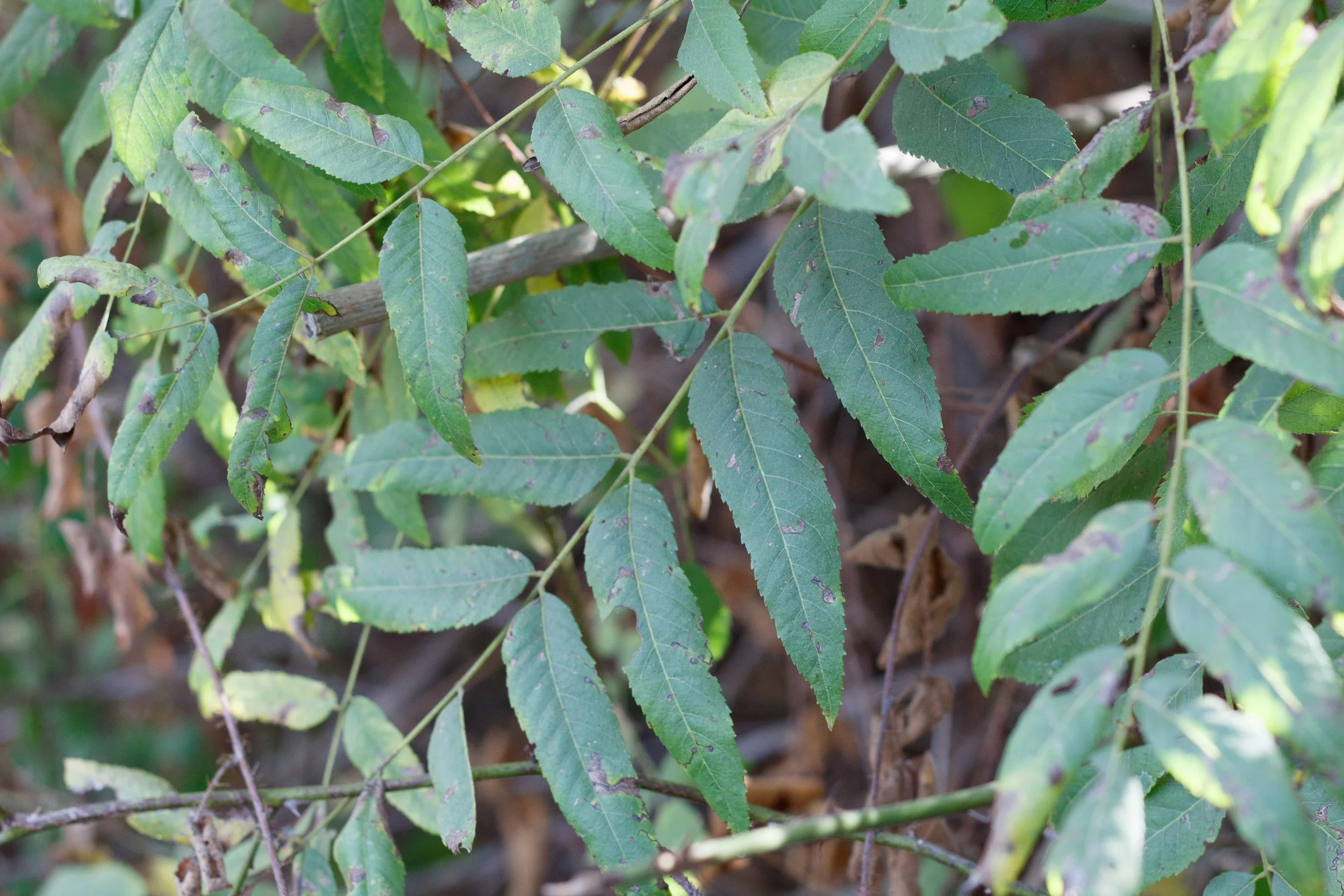
Trees
• Elderberry, Blue (Sambucus cerulea)
• Oak, Coast Live (Quercus agrifolia)
• Walnut, Southern California Black (Juglans californica)
-
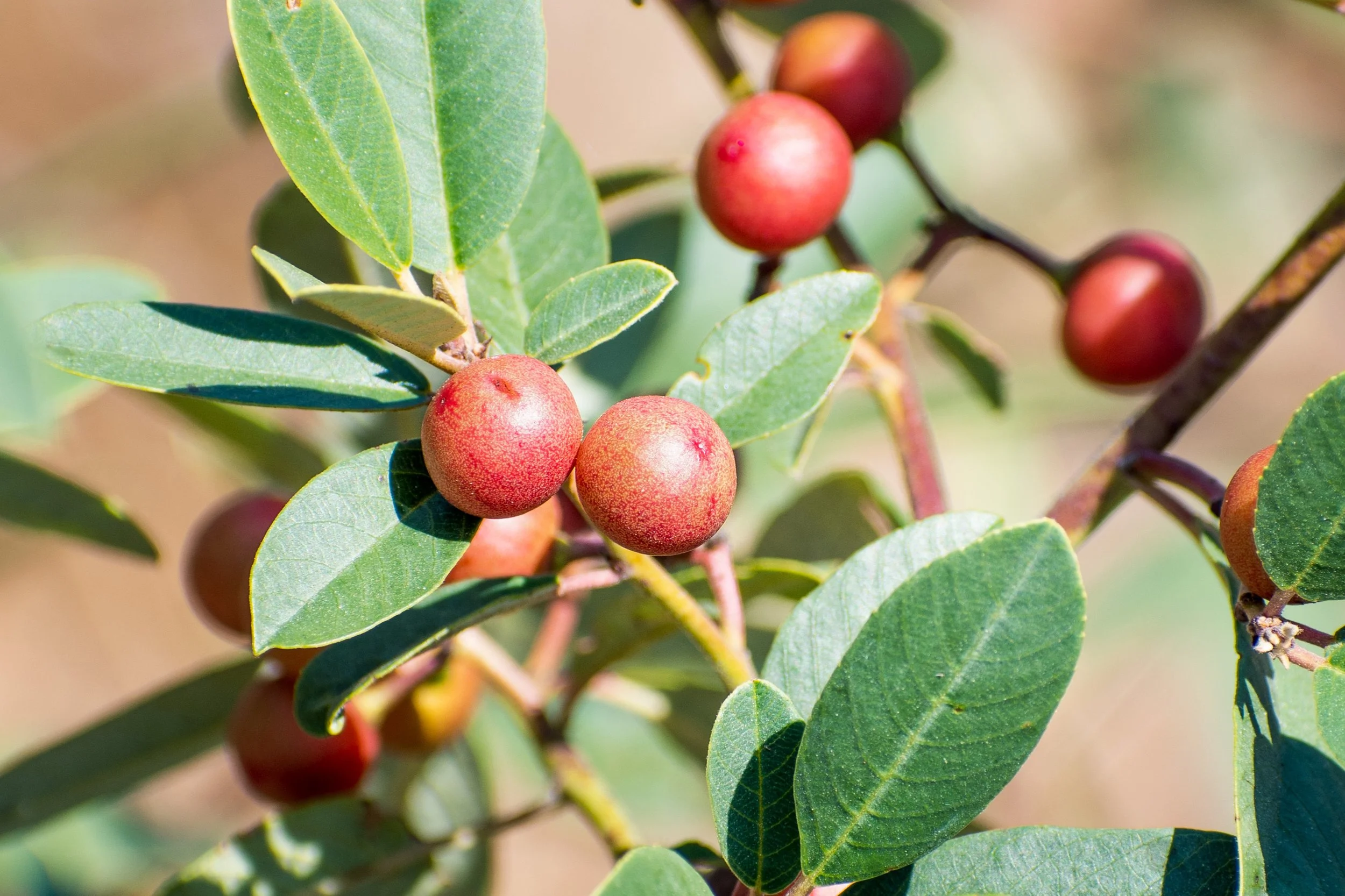
Shrubs
• Coffeeberry, California (Rhamnus californica)
• Toyon; Christmas Berry (Heteromeles arbutifolia)
-
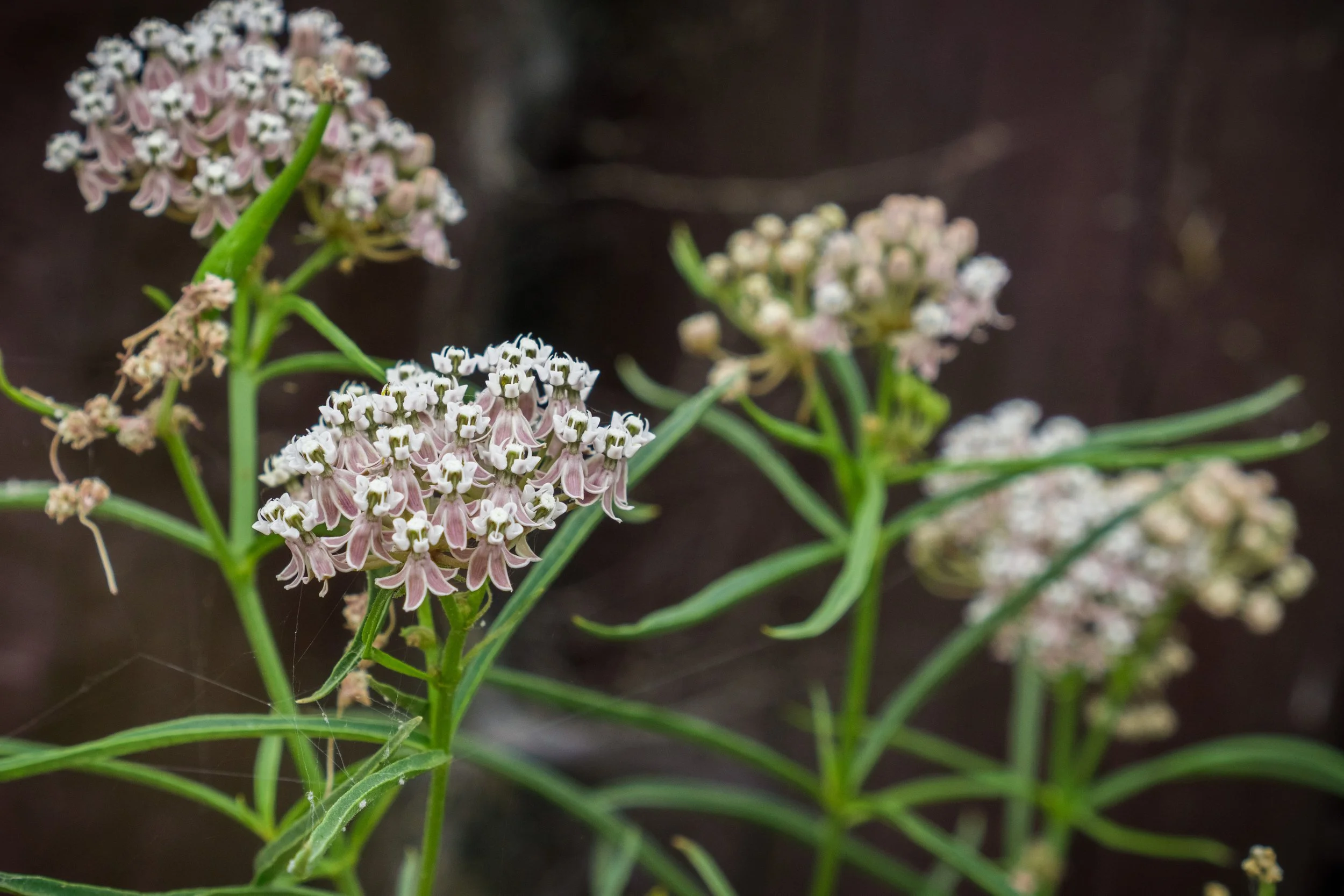
Understory
• Blue-eyed Grass (Sisyrinchium bellum)
• Blue Dicks; Wild Hyacinth (Dipterostemon capitatus)
• Cucumber, Wild; Manroot (Marah macrocarpa)
• Currant, Golden (Ribes aureum)
• Fiesta Flower (Pholistoma auritum)
• Milkweed, Indian, Bigpod (Asclepias eriocarpa)
• Milkweed, Narrow Leaf (Asclepias fascicularis)
• Mule Fat (Baccharis salicifolia)
• Poison Oak (Toxicodendron pubescens)
Coastal Sage Scrub
-
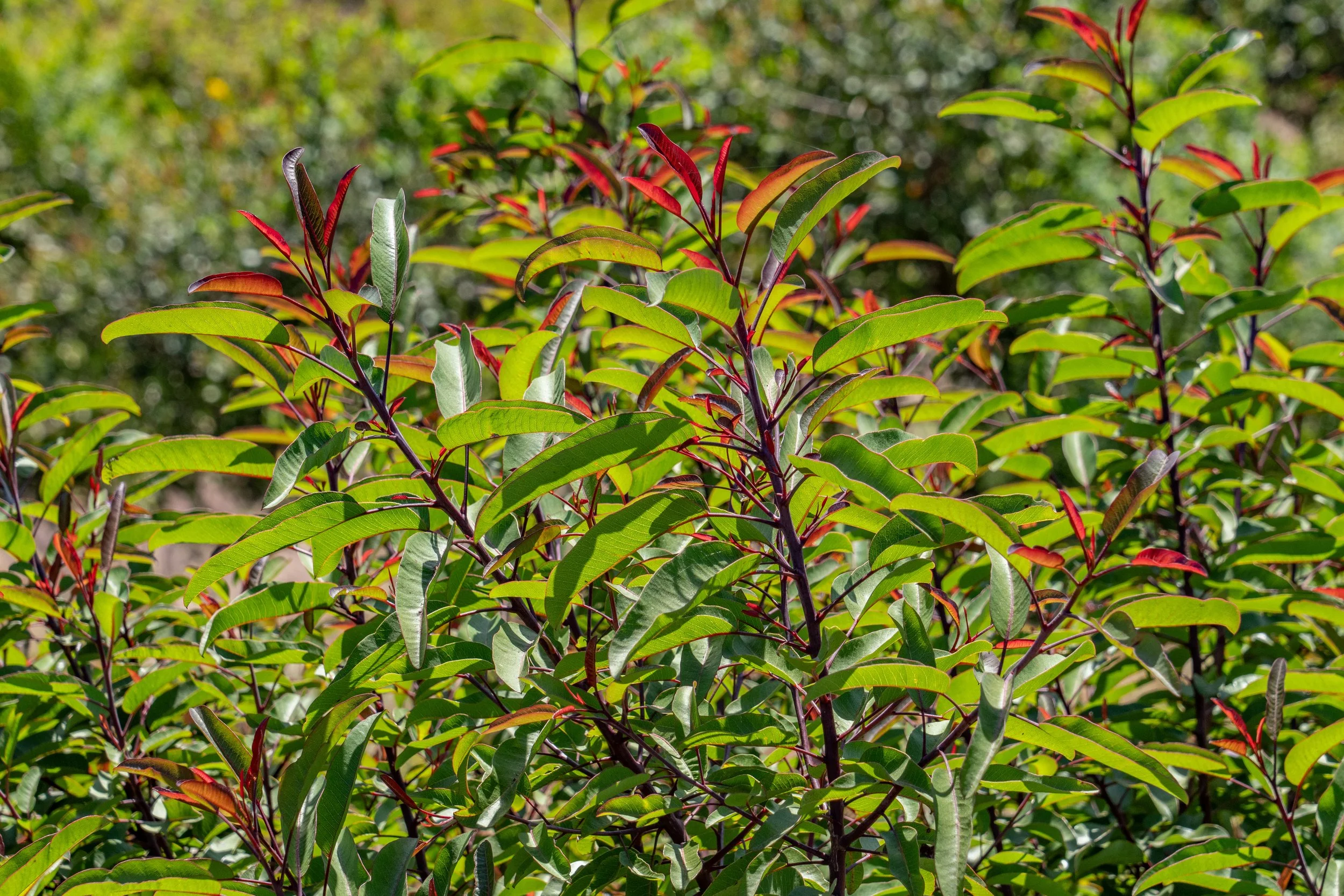
Trees and Shrub Trees
• Elderberry, Blue (Sambucus cerulea)
• Laurel Sumac (Malosma laurina)
• Toyon; Christmas Berry (Heteromeles arbutifolia)
-
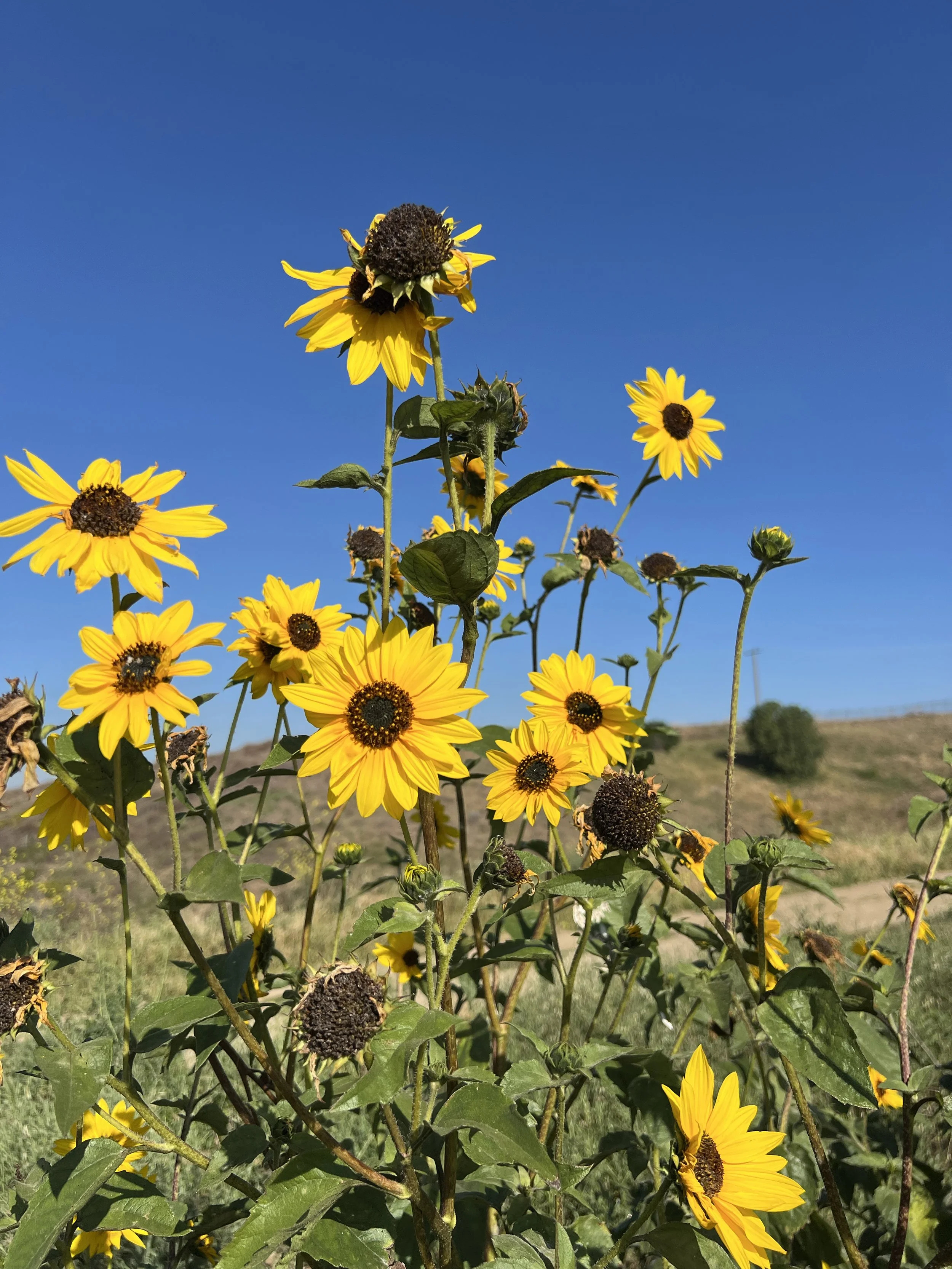
Small Shrubs
• Buckwheat, California (Eriogonum fasciculatum)
• Coyote Brush (Baccharis pilularis)
• Currant, Golden (Ribes aureum)
• Goldenbush, Coast (Isocoma menziesii)
• Mule Fat (Baccharis salicifolia)
• Sage, White (Salvia apiana)
• Sagebrush, California (Artemisia californica)
• Sunflower, Bush (Encelia californica)
-
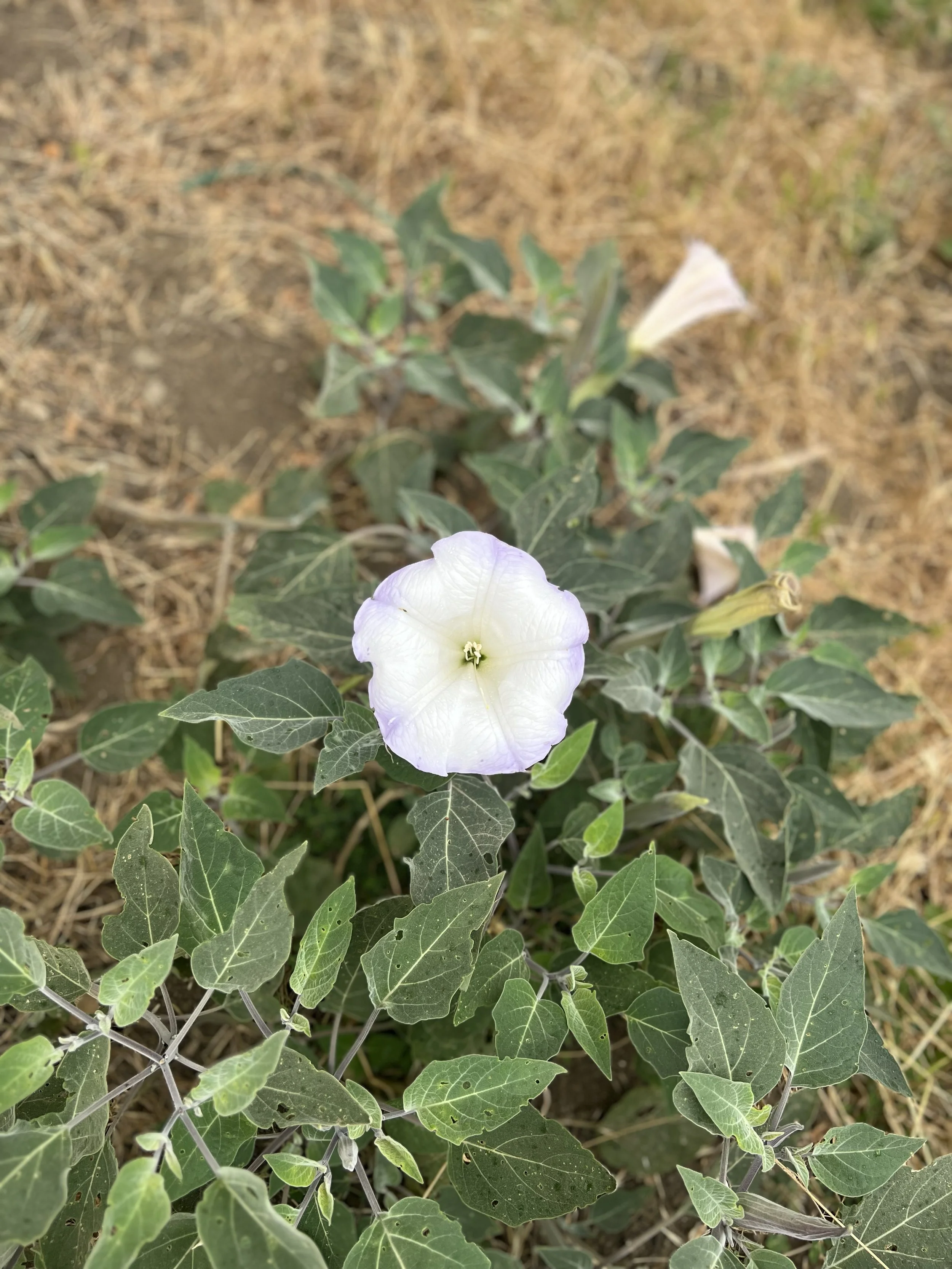
Perrenials
• Aster, California (Symphyotrichum chilense)
• Aster, Cliff (Malacothrix saxatilis)
• Buckwheat, Long stemmed (Eriogonum elongatum)
• Cactus, Prickley Pear (Opuntia ficus-indica)
• Deerweed (Acmispon glaber)
• Doveweed: TurkeyMullein (Croton setigerus)
• Fuchsia, California (Epilobium canum)
• Jimson Weed; Datura (Datura stramonium)
-
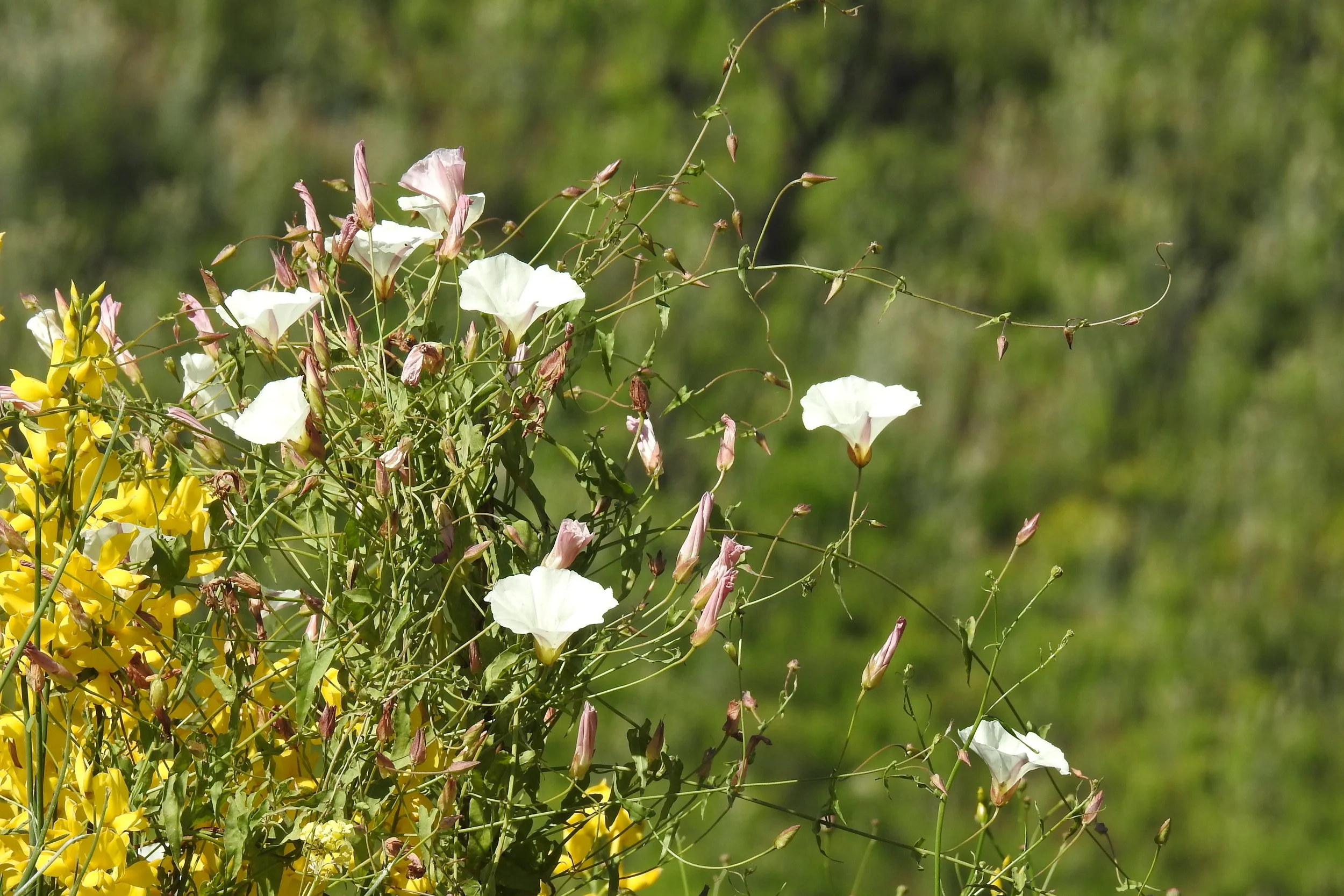
Vines
• Calabazilla (Cucurnita foetidissima)
• Morning Glory, Wild (Calystegia sepium)
• Milkweed, Climbing (Cynanchum laeve)
-

Annuals, Herbs, and Grasses
• Blue eyed grass (Sisyrinchium bellum)
• Blue Dicks; Wild Hyacinth (Dipterostemon capitatus)
• Brome, California (Bromus carinatus)
• Everlasting, White (Pearly everlasting)
• Lotus, Coastal (Nelumbo nucifera)
• Lupine, Arroyo (Lupinus succulentus)
• Pershing; Spanish Lotus; American Trefoil (Lotus purshianus)
• Poppy, California (Eschscholzia californica)
• Purple Needle Grass (Nassella pulchra)
• Rye, Giant Wild (Leymus condensatus)
• Tarweed, Slender (Madia gracilis)
• Telegraph Weed (Heterotheca grandiflora)
• Vinegarweed (Trichostema lanceolatum)
• Wand Chicory; Wire Lettuce (Stephanomeria cichoriacea)
Riparian
-
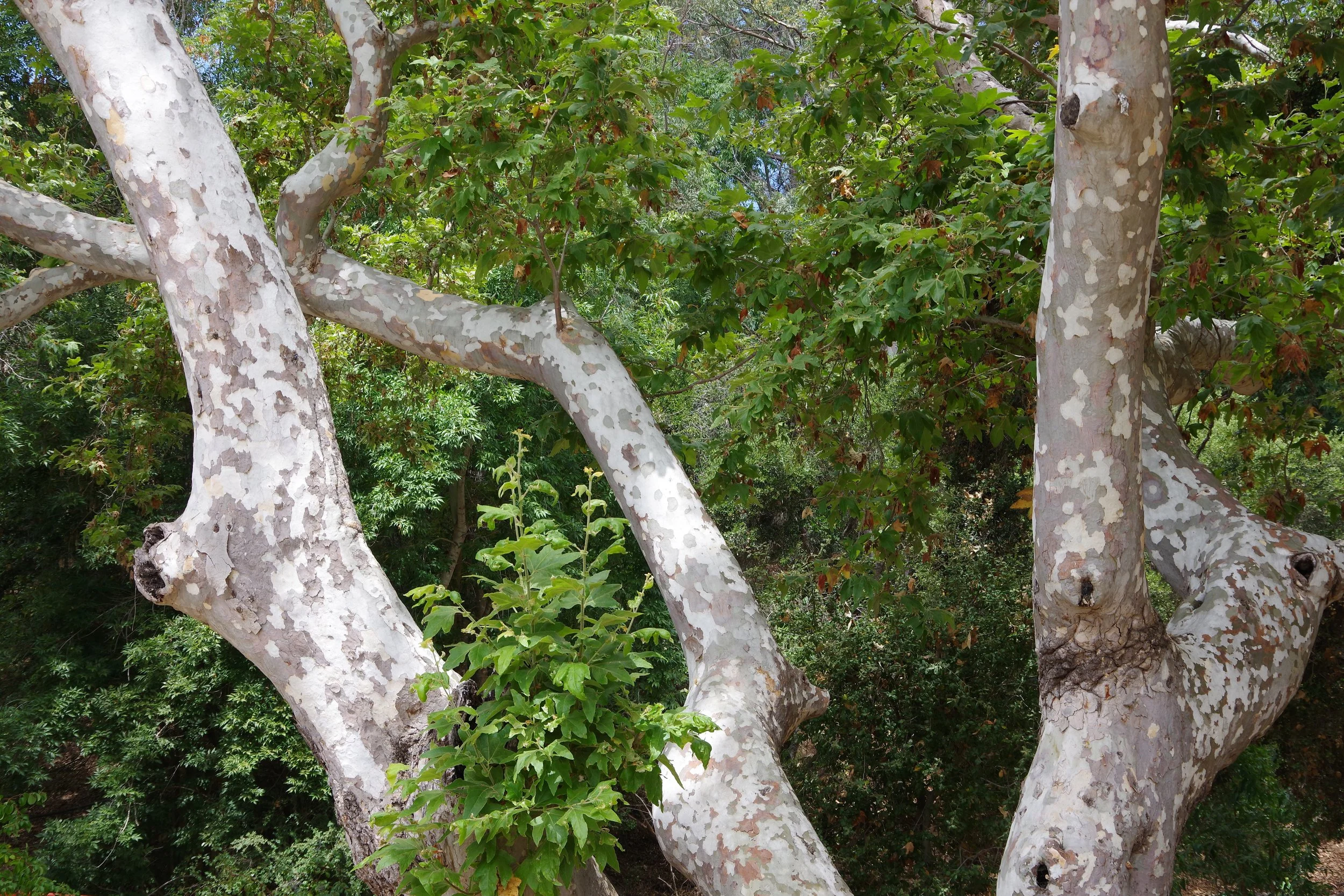
Trees
• Alder, White (Alnus rhombifolia)
• Cottonwood (Populus Fremotii)
• Sycamore (Platanus occidentalis)
• Willow, Arroyo (Salix lasiolepis)
-
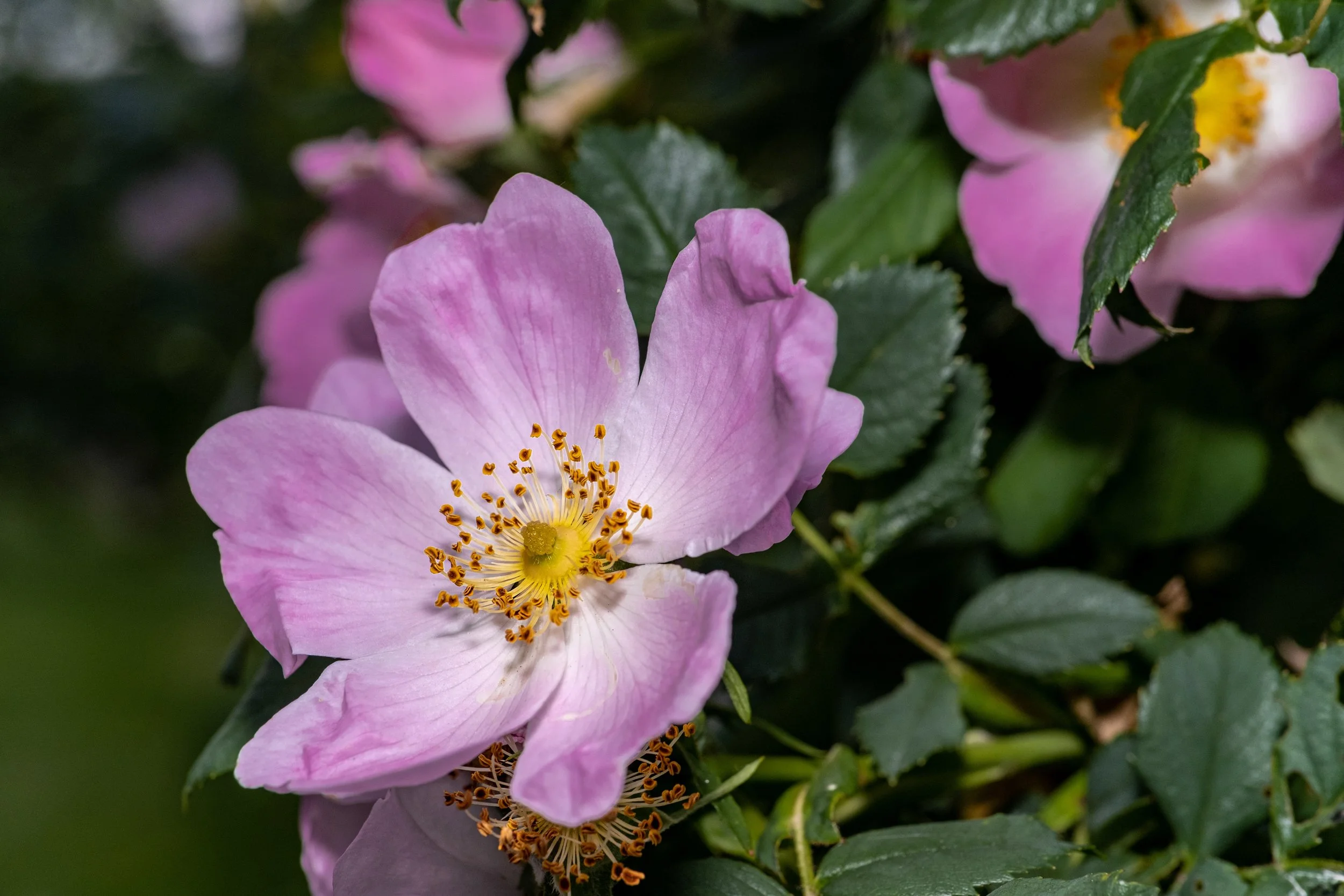
Small Shrubs, Vines, Perrenials
• Grape, Califonia Wild (Vitis californica)
• Mugwort (Artemisia vulgaris)
• Mule Fat (Baccharis salicifolia)
• Rose, California Wild (Rosa Californica)
• Yarrow, Golden (Eriophyllum confertiflorum)
-
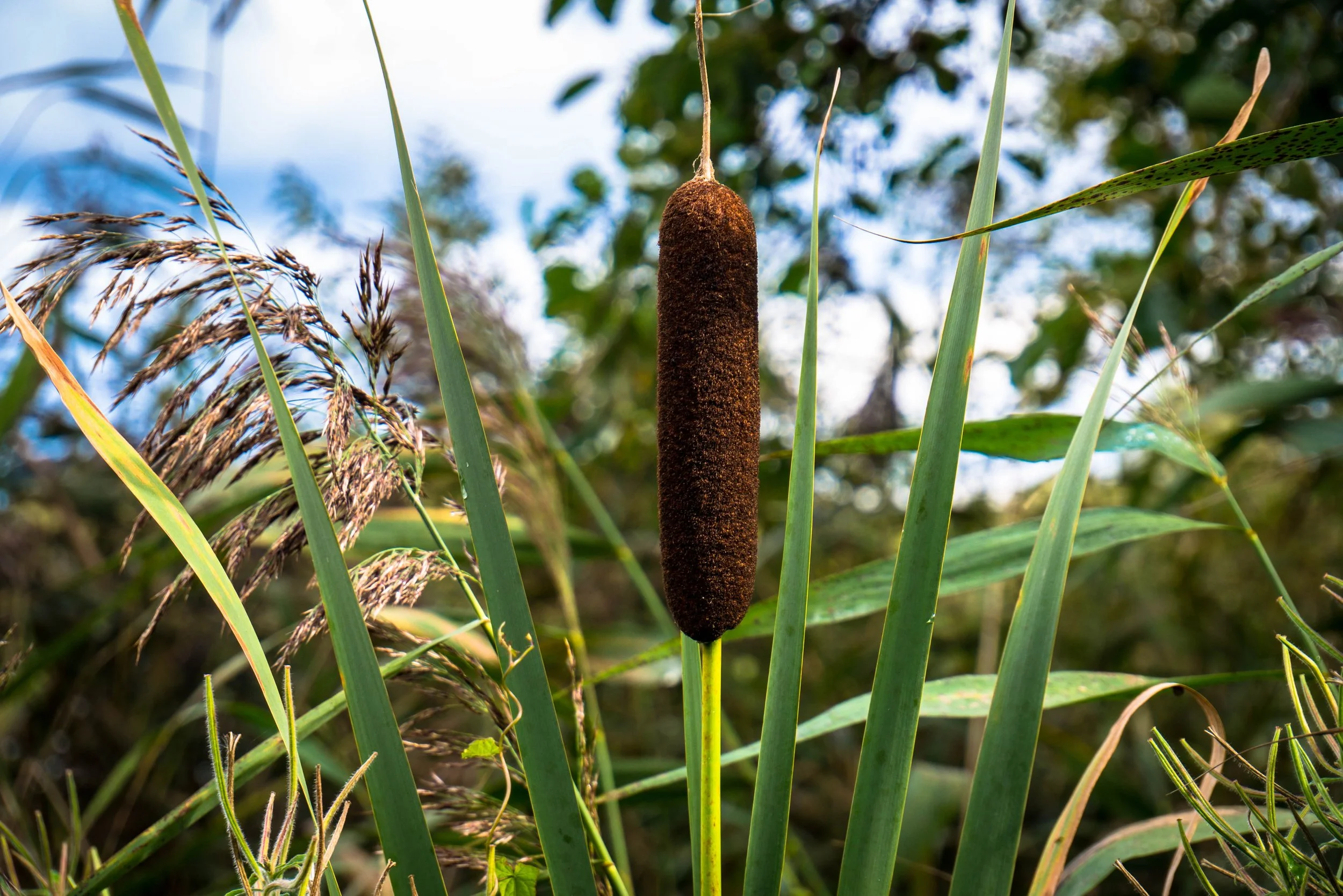
Reeds
• Cattail, Broad leaf (Typha latifolia)
Valley Grassland
-

Valley Grassland
Blue Dicks; Wild Hyacinth (Dipterostemon capitatus)
Blue eyed Grass (Sisyrinchium bellum)
Brome, California (Bromus carinatus)
Doveweed: TurkeyMullein (Croton setigerus)
Goldenstar, common (Bloomeria crocea)
Lupine, Arroyo (Lupinus succulentus)
Milkweed, Narrow Leaf (Asclepias fascicularis)
Poppy, California (Eschscholzia californica)
Purple Needle Grass (Nassella pulchra)
Rye, Giant Wild (Leymus condensatus)
Sunflower, Common (Helianthus annuus)
Telegraph Weed (Heterotheca grandiflora)
Wand Chicory; Wire Lettuce (Stephanomeria cichoriacea)
Invasive Plants
California invasive plants are non-native species that have been introduced to the state, either intentionally or accidentally, and have the ability to spread rapidly and dominate local ecosystems. These plants outcompete native species for resources, disrupt habitats, and can lead to significant ecological and economic problems.
Part of our ongoing restoration work is managing these invasive plants by hand-pulling them. This is laborious but fulfilling work that our volunteers help us achieve.
Invasive Plants at Ascot Hills
-
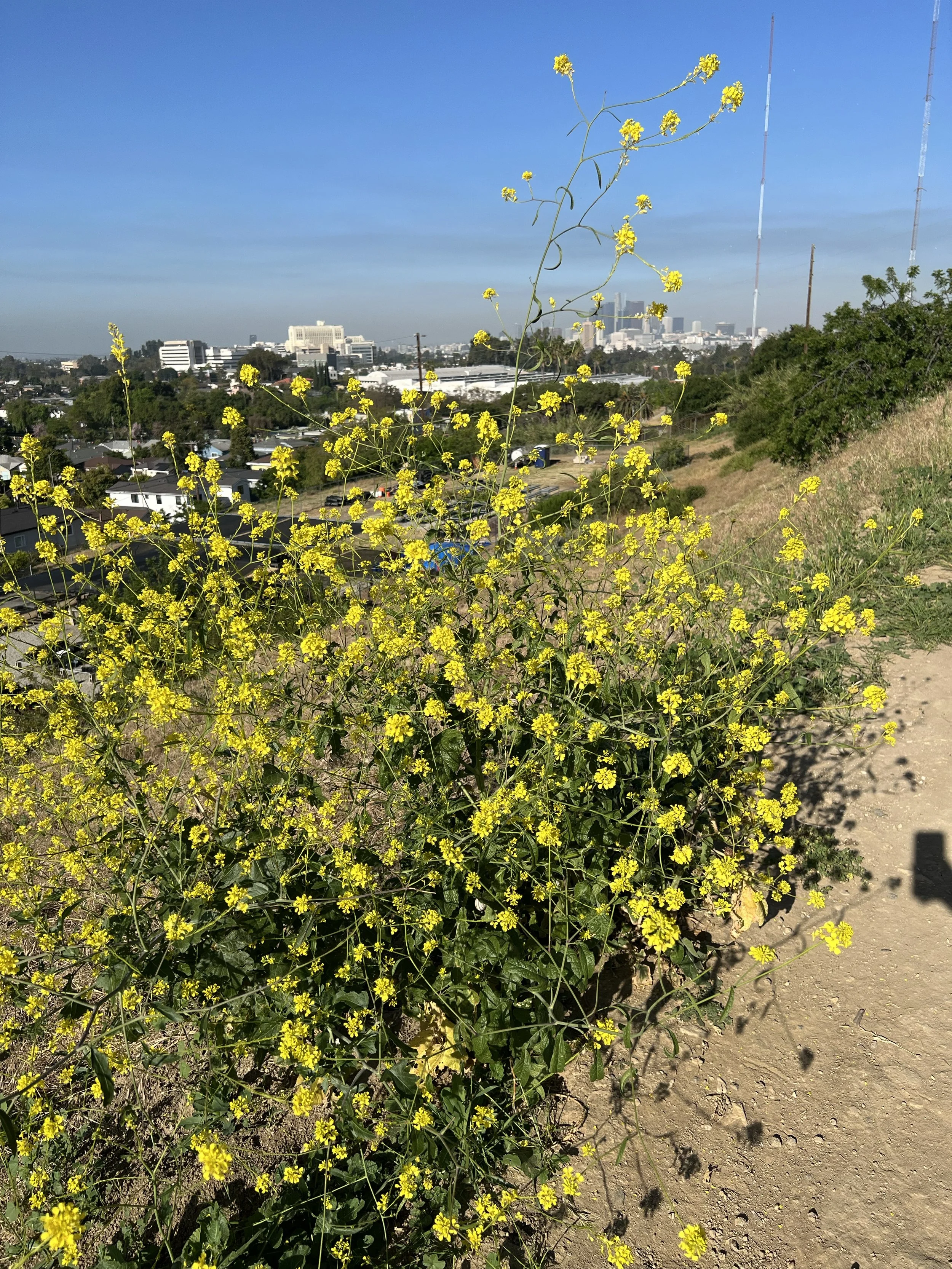
Black Mustard
Black Mustard (Brassica nigra) is an annual herb that can grow up to 4-8 feet tall. It has bright yellow flowers with four petals arranged in a cross shape.
Impact on the Environment:
• Displacement of Native Plants: Outcompetes and displaces natives, reducing biodiversity.
• Increased Fire Risk: Becomes highly flammable, fueling wildfires.
• Habitat Alteration: Changes habitat, affecting wildlife.
• Seed Bank Persistence: Seeds remain viable for years, complicating eradication.
-
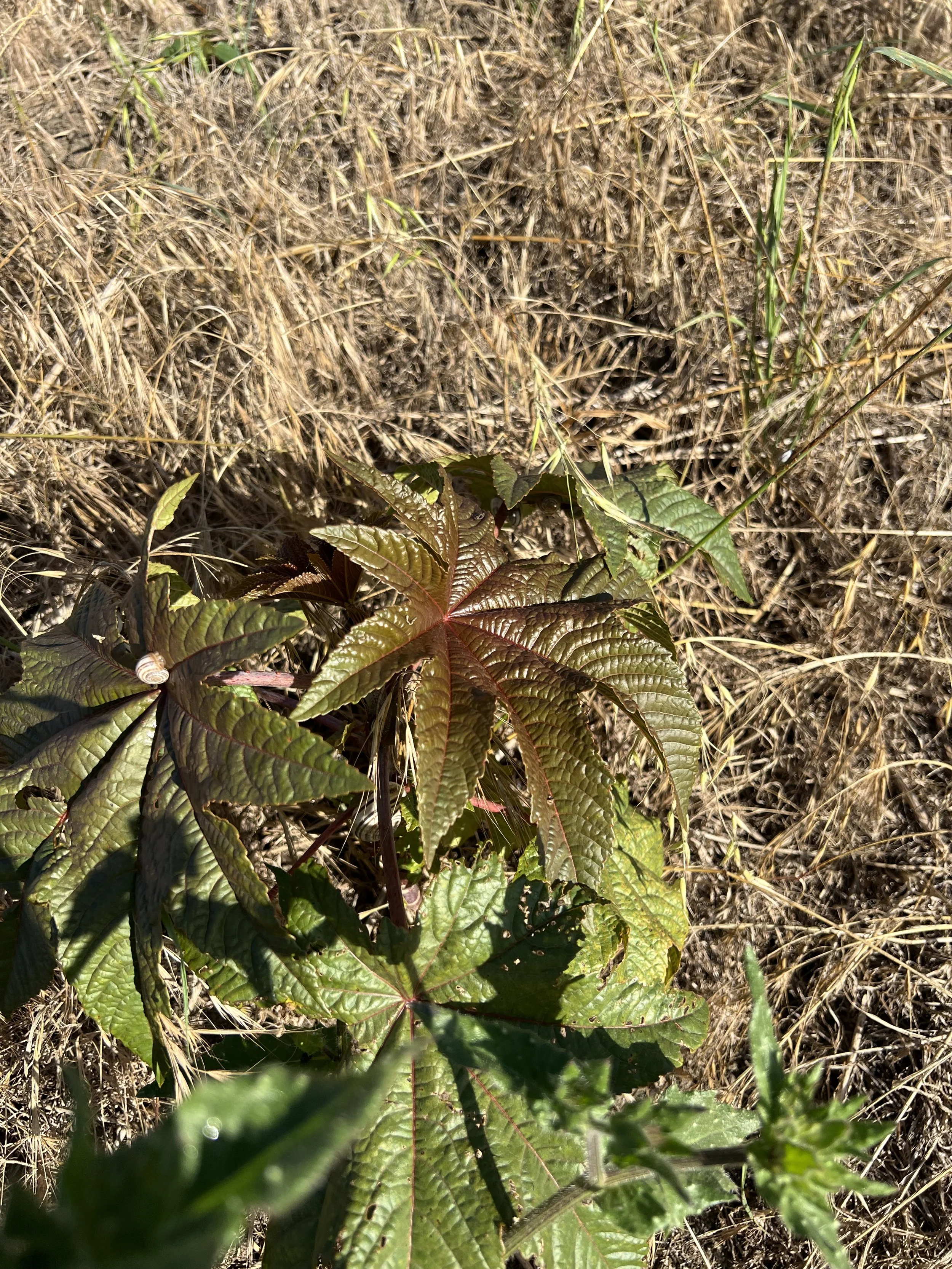
Castor Bean
Castor Bean (Ricinus communis) is a fast-growing, perennial shrub or small tree that can reach heights of 6-15 feet or more. It has large, glossy, lobed leaves that are often reddish or purplish in color. The plant produces clusters of spiky seed capsules containing mottled, bean-like seeds.
Impact on the Environment:
• Displacement of Native Plants: Outcompetes and displaces natives, reducing biodiversity.
• Toxicity: Highly toxic; seeds and plant parts contain lethal ricin.
• Habitat Alteration: Shading out native plants and altering habitat.
-

Cheese Mallow
Cheese Mallow (Malva parviflora), also known as small-flowered mallow or little mallow, is an annual or biennial herb that can grow up to 1-3 feet tall. It has round or kidney-shaped leaves with toothed edges and produces small, pale pink to white flowers. The plant gets its name from the shape of its seed pods, which resemble small cheese wheels.
Impact on the Environment:
Displacement of Native Plants: Forms dense mats that crowd out native species, reducing biodiversity.
Soil and Water Competition: Depletes soil nutrients and water, harming native plants.
Seed Bank Persistence: Seeds remain viable for years, causing persistent infestations.
